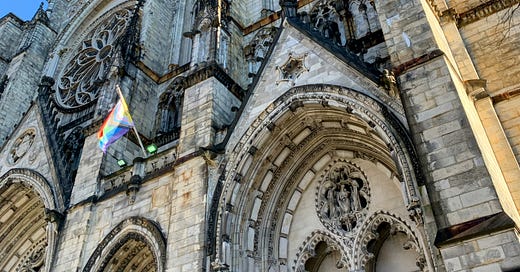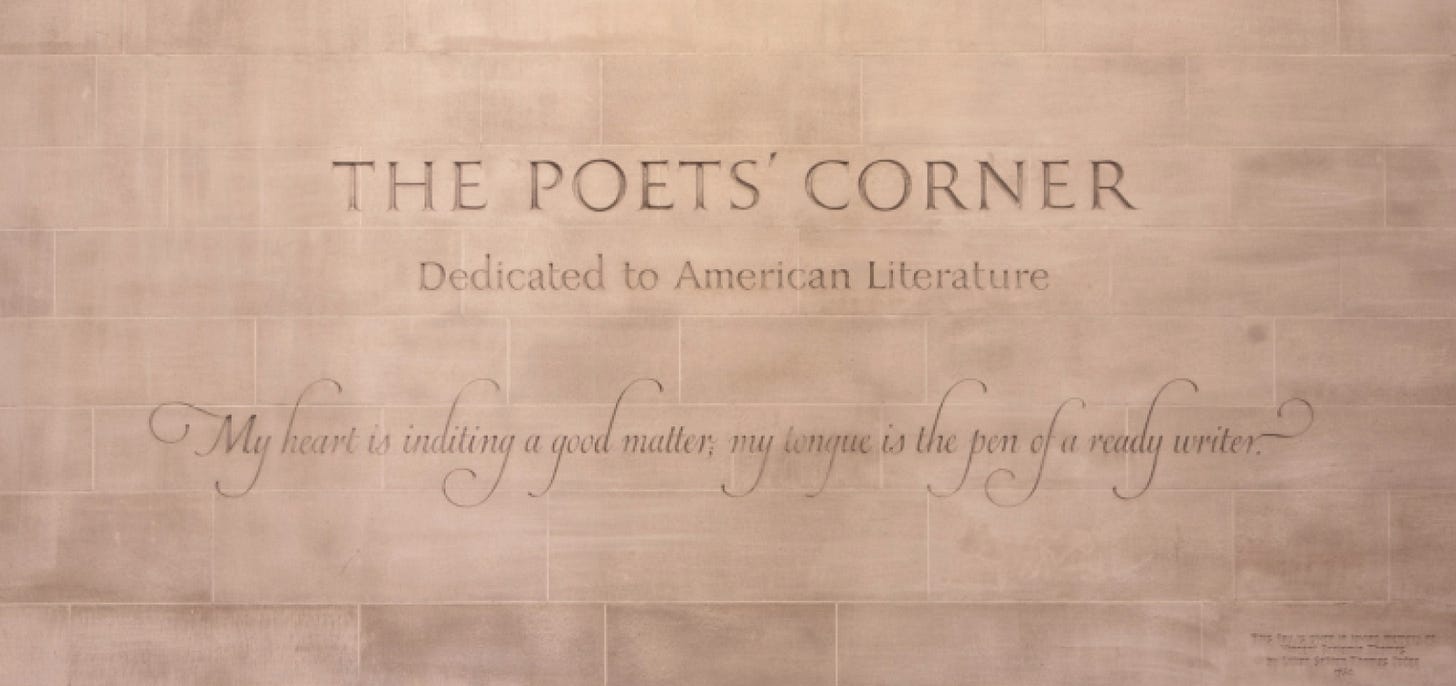On the first day in February, my wife and I visited an area we like but haven’t taken the opportunity to visit in some years: Morningside Heights. Perhaps best known as the area surrounding Columbia University, it also contains several other important and entertaining sites, including schools, churches, bookshops, and cafes. Though it’s seen its fair share of communal changes since the Covid era began, and has likewise been affected by protests that have rocked the Columbia campus, it remains vibrant and refreshing, a bright spot in the overall backdrop of the city.
We started at Broadway and 110th, and walked up Broadway to 120th street to see what shops and restaurants there were, and gaze at the Columbia University campus which, though massive and beautiful, is still currently off limits to the general public. Peering through the wrought iron gates, I recalled rambling around, going to open studios or artist lectures there. We walked all around the campus, passing by The Barnard College gate, The Riverside Church, The Union Theological Seminary, and Columbia Teachers College; then turned south on Amsterdam, and headed to our primary destination, The Cathedral of Saint John The Divine. We absolutely love this place. It’s a jewel in the rough hewn crown that’s New York City. Most people I know have never been to it. They don’t know that the largest Cathedral in America is right here. I discovered Morningside Heights thanks to reading about the lives of Beat writers like Jack Kerouac and Allen Ginsberg, who both attended Columbia in the Forties, and had many adventures and some calamities there.
The first time I came to St John’s, it was to attend a literary event, the dedication of a stone in an area of the church called The American Poet’s Corner. It’s an event that takes place every November. In 2000 the sole inductee was Edna St Vincent Millay, a poet who was famous in her day not only as the first woman (and only the second person) to win The Pulitzer Prize for Poetry, in 1923. She was a “renowned social figure and noted feminist in New York City during the Roaring Twenties and beyond.” (1), At the time, I didn’t know that much about her, but what better reason to go? It was interesting to me that a place of religious worship took such a fervent interest in the literary figures of American history. I went on to attend many such events in the next few years, including their annual reading of Dante’s Inferno (this coming April 11 from 7-10 pm)
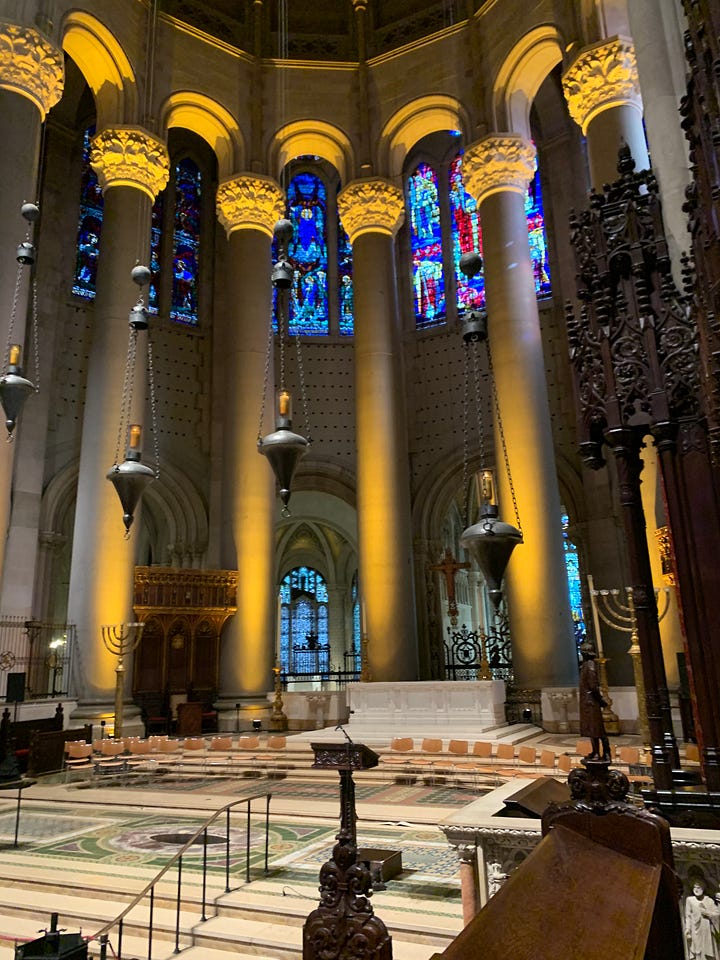



But even when there’s nothing happening in the space, one can never call it empty. It has such scale and presence. Our primary reason for going there is to immerse ourselves in this feeling of peace.
Now I’ve traveled to France and have seen many churches and cathedrals. I’ve walked around in into Chartres, which took a thousand years to build and rebuild and rebuild again; and I’ve been to ruined, ghostly churches like Jumieges Abbey. But nowhere in America have I ever glimpsed a place like St John’s. It has gravity and grace in excess of any other place. There is a grand nave with little sections on each side exhibiting artworks, devotional spaces, a large relic from the wreckage of the destroyed World Trade Center, and in chapels behind the main choir areas are displayed historical treasures from the deep vaults below. There are plenty of places to sit and soak in the peace to be had there.
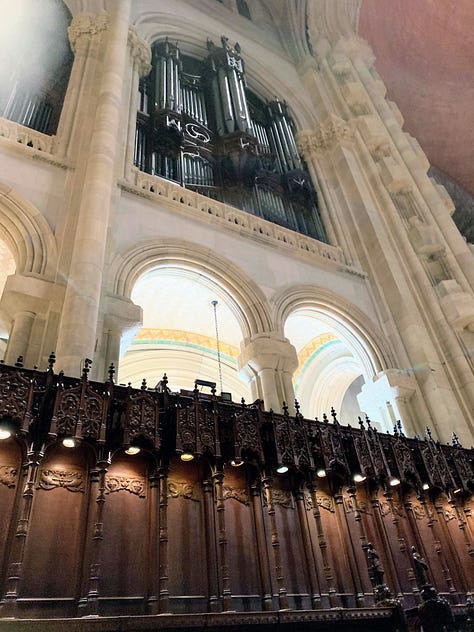


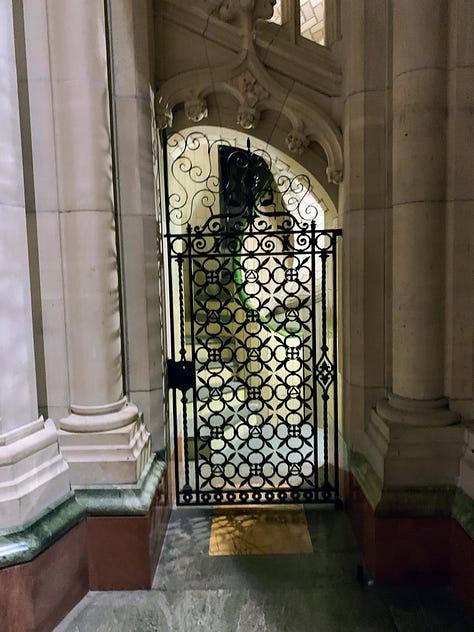
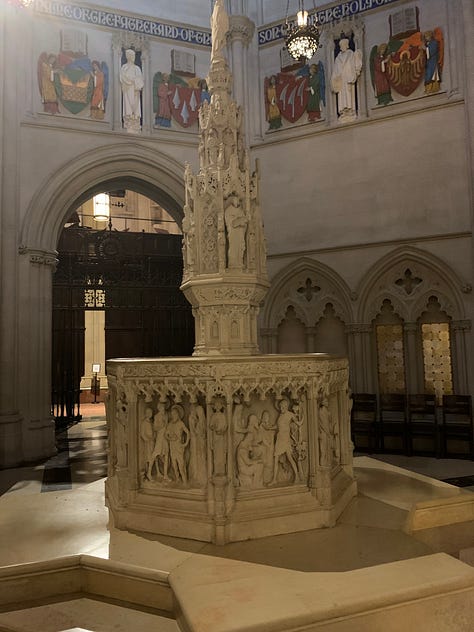

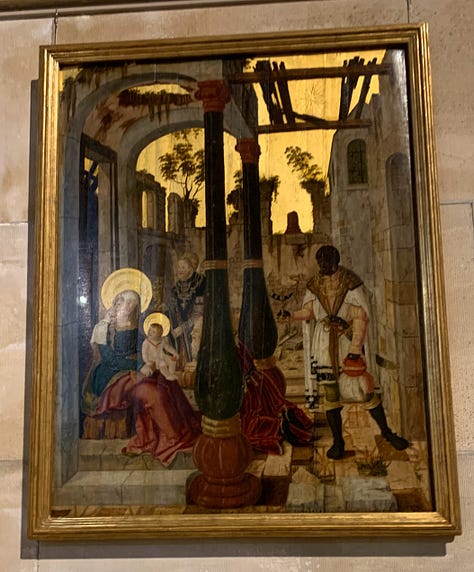
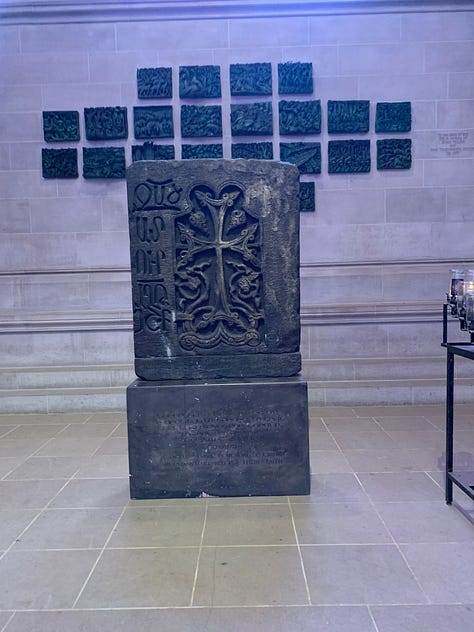

(1) McClatchy, J. D. (September 16, 2001). "Like a Moth to the Flame". The New York Times. ISSN 0362-4331.

